Machine Learning Based Interference Mitigation for Intelligent Air-to-Ground Internet of Things
Abstract
:1. Introduction
2. System Model
3. Interference Evaluation Method
4. Power Control Method of ATG CPE Based on ML
4.1. Prediction Method of Time Series Based on ML
4.1.1. Self-Attention Layer
- Step 1: When calculating the fraction between specific vectors, the following formula is used: .
- Step 2: In normalizing the fraction of gradient stability, the following formula is used: .
- Step 3: Later, when converting scores to probabilities, the softmax function is used to process them .
- Step 4: The weighted value matrix obtained is .
4.1.2. Multihead Attention
4.1.3. Other Key Concepts in Transformer
4.2. Power Control Method
4.3. Training Process of ML Model
| Training Process 1: The Power Control Training Process of ATG CPE Based on ML |
| Input: Iterations , A neural network consist of Encoder and Decoder, Datasets , Output: Neural network parameters Initialize ,Embedding vector , which and contain the interference estimation embedding and the sequence position embedding for from to : Encoder:
|
5. Numerical Analysis
5.1. Analysis of Cofrequency Interference
5.2. Analysis of the Performance of Power Control Method of ATG CPE Based on ML
6. Conclusions
Author Contributions
Funding
Data Availability Statement
Conflicts of Interest
References
- Tran-Dang, H.; Krommenacker, N.; Charpentier, P.; Kim, D.S. Toward the IoT for Physical Internet: Perspectives and Challenges. IEEE Internet Things J. 2020, 7, 4711–4736. [Google Scholar] [CrossRef]
- Anthi, E.; Williams, L.; Słowińska, M.; Theodorakopoulos, G.; Burnap, P. A supervised intrusion detection system for smart home IoT devices. IEEE Internet Things J. 2019, 6, 9042–9053. [Google Scholar] [CrossRef]
- Shafique, K.; Khawaja, B.A.; Sabir, F.; Qazi, S.; Mustaqim, M. IoT (IoT) for next-generation smart systems: A review of current challenges, future trends and prospects for emerging 5G-IoT scenarios. IEEE Access 2020, 8, 23022–23040. [Google Scholar] [CrossRef]
- Liu, L.; Zhang, S.; Zhang, R. Multi-Beam UAV Communication in Cellular Uplink: Cooperative Interference Cancellation and Sum-Rate Maximization. IEEE Trans. Wirel. Commun. 2019, 18, 4679–4691. [Google Scholar] [CrossRef] [Green Version]
- Zeng, Y.; Wu, Q.; Zhang, R. Accessing from the sky: A tutorialon UAV communications for 5G and beyond. Proc. IEEE 2019, 107, 2327–2375. [Google Scholar] [CrossRef] [Green Version]
- Mozaffari, M.; Saad, W.; Bennis, M.; Nam, Y.-H.; Debbah, M. A tutorial on UAVs for wireless networks: Applications, challenges, and open problems. IEEE Commun. Surv. Tutor. 2019, 21, 2334–2360. [Google Scholar] [CrossRef] [Green Version]
- Hong, T.; Zhao, W.; Liu, R.; Kadoch, M. Space-air-ground IoT network and related key technologies. IEEE Wirel. Commun. 2020, 27, 96–104. [Google Scholar] [CrossRef]
- Guo, H.; Li, J.; Liu, J.; Tian, N.; Kato, N. A survey on space-airground-sea integrated network security in 6G. IEEE Commun. Surv. Tutor. 2022, 24, 53–87. [Google Scholar] [CrossRef]
- Liu, J.; Shi, Y.; Fadlullah, Z.M.; Kato, N. Space-air-ground integrated network: A survey. IEEE Commun. Surv. Tutor. 2018, 20, 2714–2741. [Google Scholar] [CrossRef]
- Recommendation ITU-R M.2101-0, Modeling and Simulation of IMT Networks and Systems for Use in Sharing and Compatibility Studies; ITU: Geneva, Switzerland, 2017.
- ITU-R Recommendation P.525-4, Calculation of Free-Space Attenuation; ITU: Geneva, Switzerland, 2019.
- ITU-R Recommendation P.2108-1, Prediction of Clutter Loss; ITU: Geneva, Switzerland, 2021.
- ITU-R Document 5D/716-E, “Characteristics of Terrestrial Component of IMT for Sharing and Compatibility Studies in Preparation for WRC-23,” in Geneva; ITU: Geneva, Switzerland, 2021.
- Vaswani, A.; Shazeer, N.; Parmar, N.; Uszkoreit, J.; Jones, L.; Gomez, A.N.; Kaiser, Ł.; Polosukhin, I. Attention is all you need. In Proceedings of the 31st Conference on Neural Information Processing System, Long Beach, CA, USA, 4–9 December 2017. [Google Scholar]
- Dufter, P.; Schmitt, M.; Schütze, H. Position information in transformers: An overview. Comput. Linguist. 2022, 48, 733–763. [Google Scholar] [CrossRef]
- Loh, S.B.; Roy, D.; Fernando, B. Long-term Action Forecasting Using Multi-headed Attention-based Variational Recurrent Neural Networks. In Proceedings of the IEEE/CVF Conference on Computer Vision and Pattern Recognition, New Orleans, LA, USA, 19–20 June 2022; pp. 2419–2427. [Google Scholar]
- Ba, J.L.; Kiros, J.R.; Hinton, G.E. Layer normalization. arXiv 2016, arXiv:1607.06450. [Google Scholar]
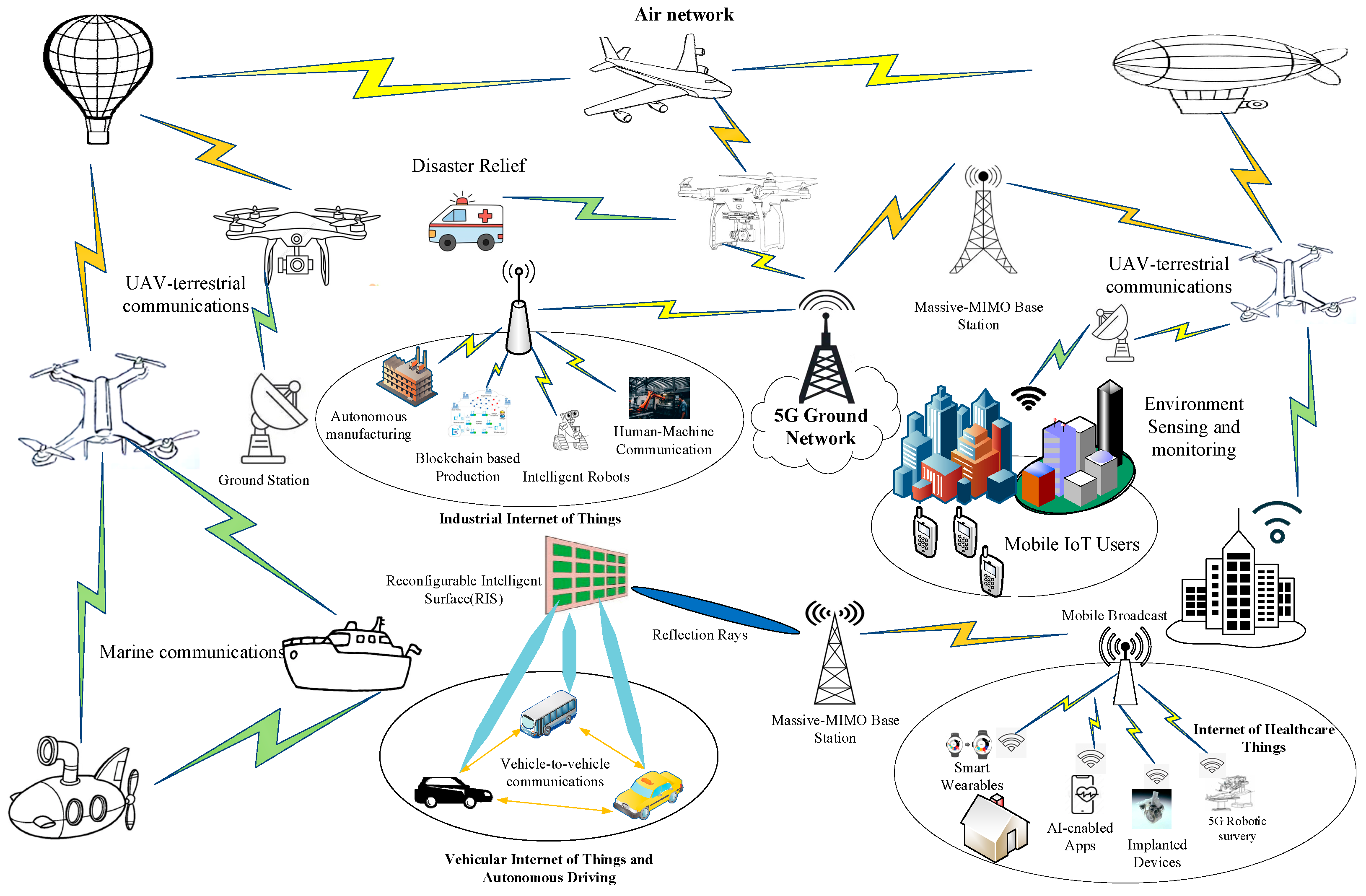
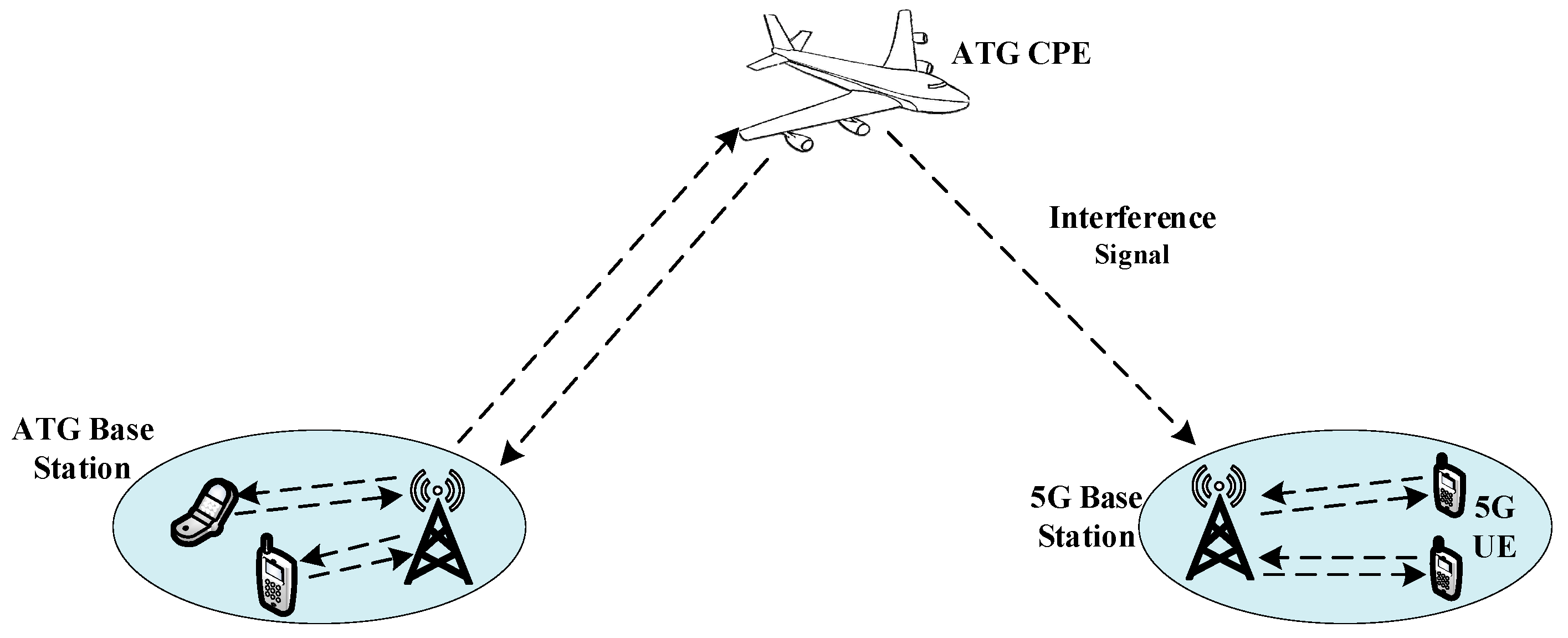

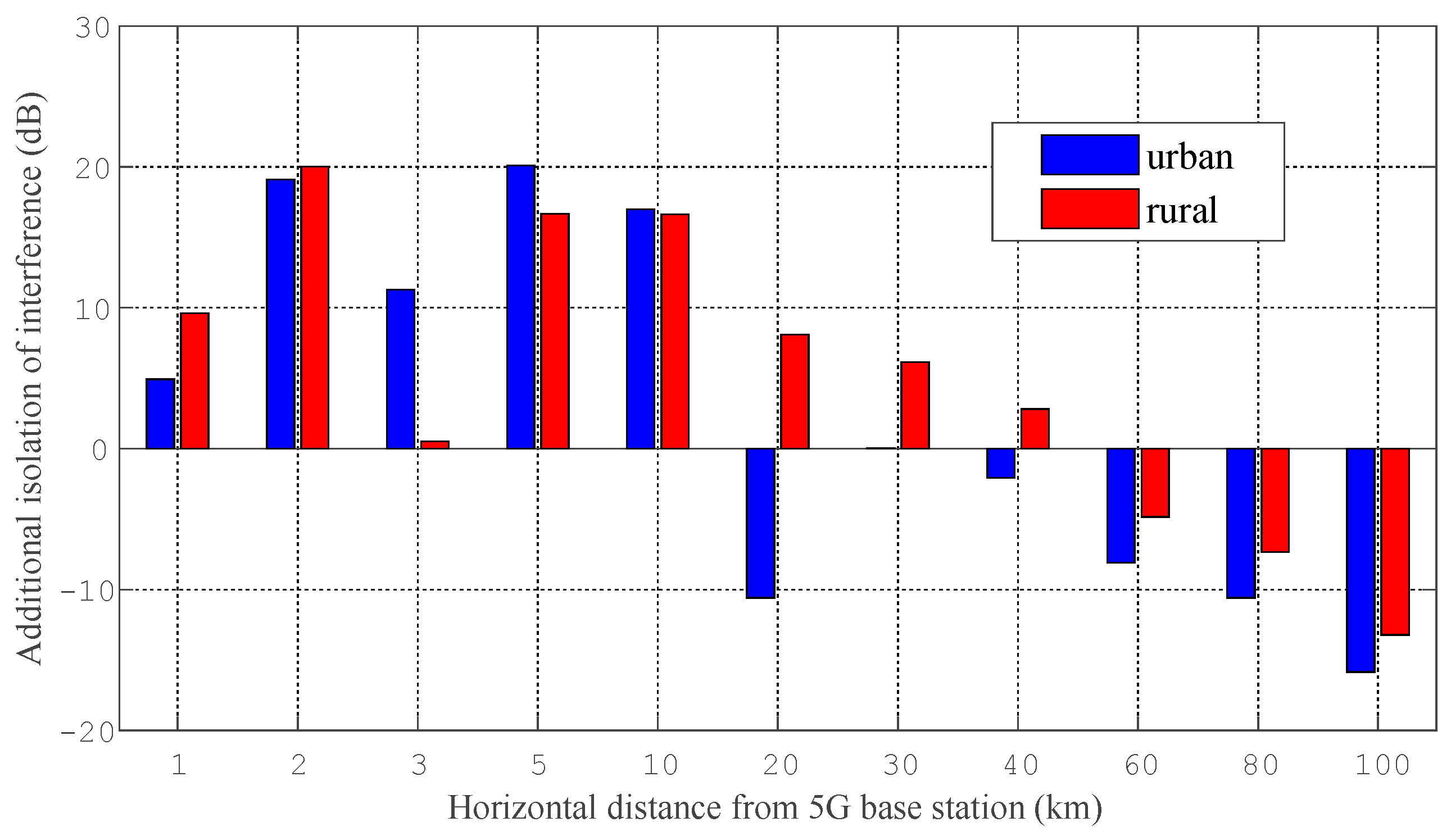
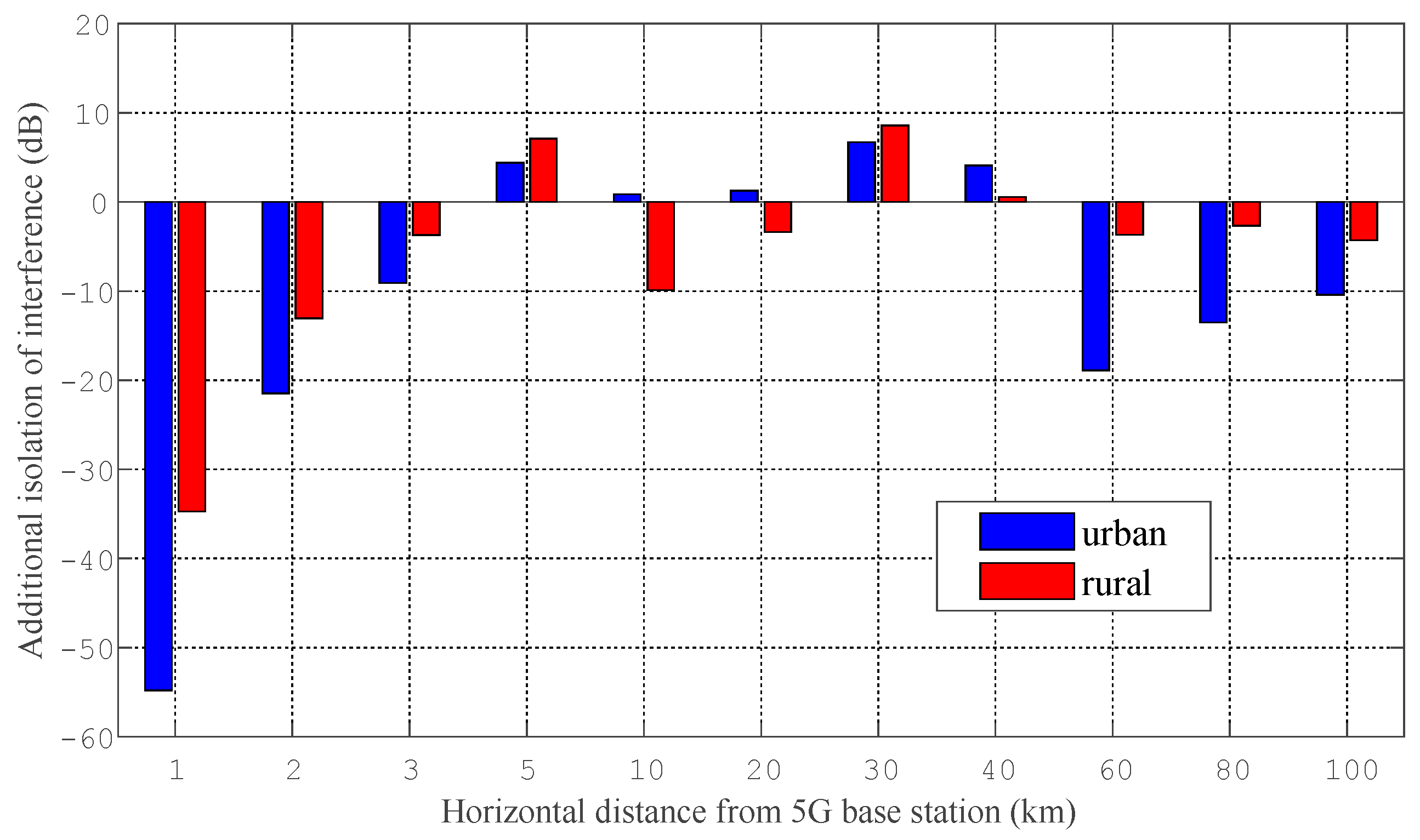


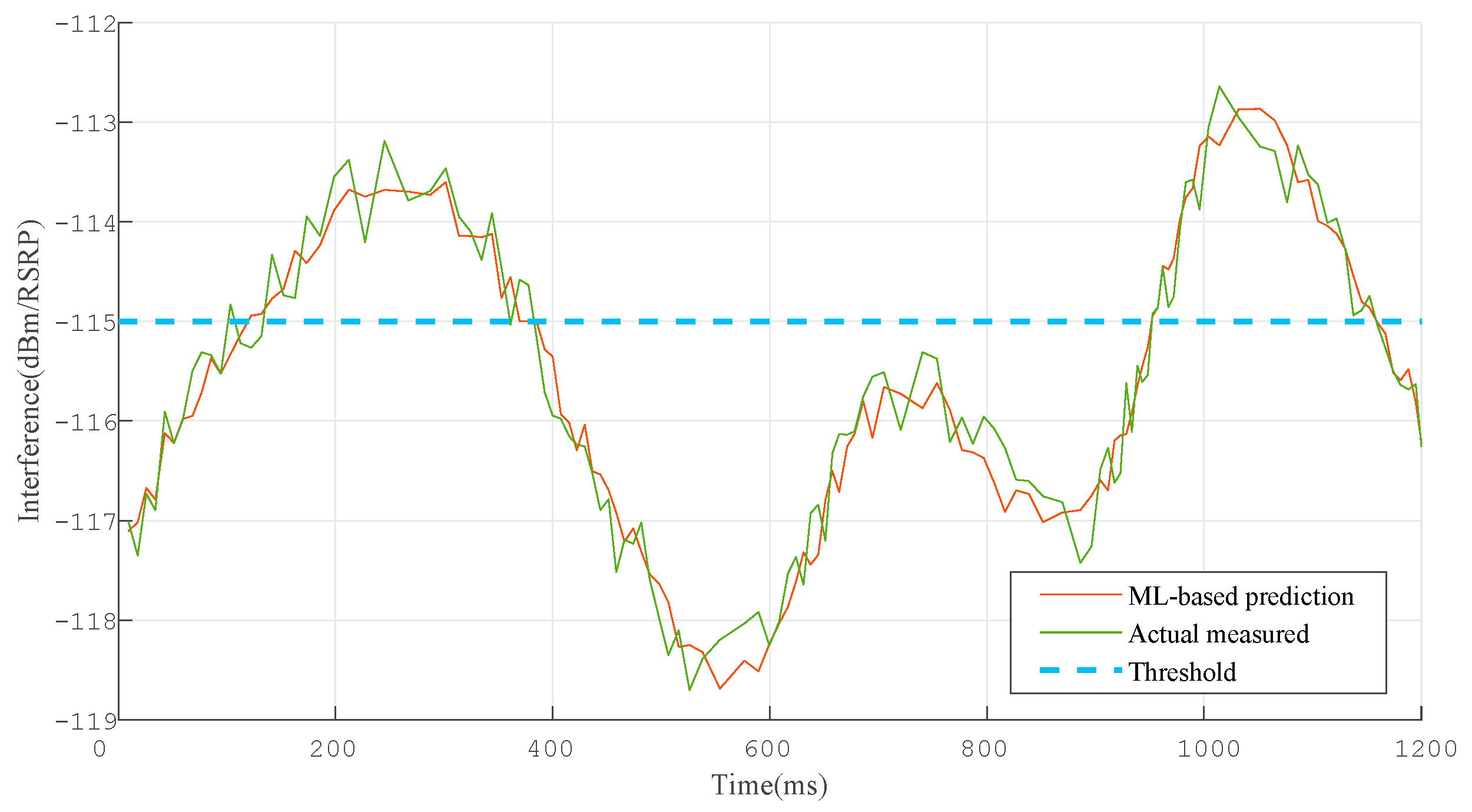

| Parameter | Value |
|---|---|
| Frequency Band | 3.5 GHz |
| Network configuration | TDD |
| Channel bandwidth | 100 MHz |
| ATG area radius | 100 km |
| Maximum transmitting power | 26 dBm |
| Element gain | 5 dBi |
| Antenna altitude | 3~10 km |
| Parameter | Value | |
|---|---|---|
| Frequency band | 3.5 G | |
| TDD/FDD | TDD | |
| Typical channel bandwidth | 100 MHz | |
| Scenario | Rural | Urban |
| Element gain | 6.4 dBi | 6.4 dBi |
| Mechanical downtilt | 3° | 6° |
| Antenna height | 35 m | 20 m |
| Cell radius | 1.6 km | 0.4 km |
| Sectorization | 3 sectors | |
| Antenna pattern | Recommendation ITU-R M. 2101 | |
| Horizontal/vertical 3 dB beam width | 90° for H, 65° for V | |
| Horizontal/vertical front to back ratio | 30 dB | |
| Antenna polarization | ±45° | |
| Antenna array configuration | 4 × 8 | |
| Array Ohmic loss | 2 dB | |
| Protection criterion (I/N) | −6 dB | |
| Noise temperature | 290 K | |
| Receiver noise level (10logKT B) | −109 dBm/MHz | |
| Noise figure | 5 dB | |
| Receiver protection threshold | −115 dBm/MHz | |
Disclaimer/Publisher’s Note: The statements, opinions and data contained in all publications are solely those of the individual author(s) and contributor(s) and not of MDPI and/or the editor(s). MDPI and/or the editor(s) disclaim responsibility for any injury to people or property resulting from any ideas, methods, instructions or products referred to in the content. |
© 2023 by the authors. Licensee MDPI, Basel, Switzerland. This article is an open access article distributed under the terms and conditions of the Creative Commons Attribution (CC BY) license (https://creativecommons.org/licenses/by/4.0/).
Share and Cite
Liu, L.; Li, C.; Zhao, Y. Machine Learning Based Interference Mitigation for Intelligent Air-to-Ground Internet of Things. Electronics 2023, 12, 248. https://doi.org/10.3390/electronics12010248
Liu L, Li C, Zhao Y. Machine Learning Based Interference Mitigation for Intelligent Air-to-Ground Internet of Things. Electronics. 2023; 12(1):248. https://doi.org/10.3390/electronics12010248
Chicago/Turabian StyleLiu, Lei, Chaofei Li, and Yikun Zhao. 2023. "Machine Learning Based Interference Mitigation for Intelligent Air-to-Ground Internet of Things" Electronics 12, no. 1: 248. https://doi.org/10.3390/electronics12010248






